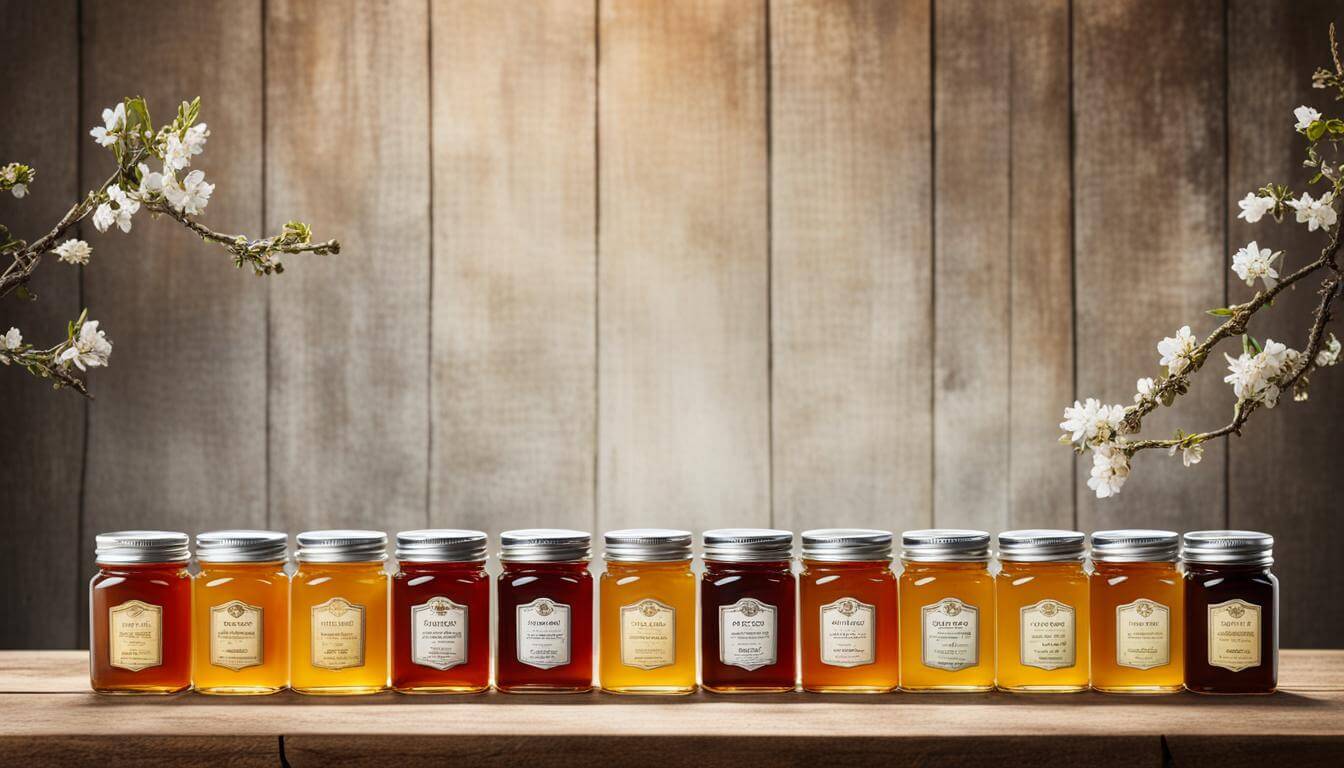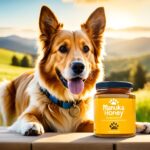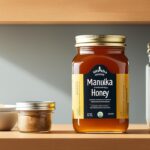When it comes to superfoods, few have stirred as much intrigue and investment as Manuka honey. Touted for its rich, unique flavor and multiplicity of health benefits, this honey hails from the pristine wilds of New Zealand and has become a staple for those seeking natural wellness solutions. But with a market flooded with options, how can one discern between pure Manuka honey and those less potent concoctions? The answer lies in understanding what truly sets authentic Manuka honey products apart.
As you embark on a quest through the golden, sticky depths of Manuka honey benefits, be prepared to uncover the genuine allure of this remarkable substance. Whether spread on a morning toast or applied to a nighttime skin routine, true Manuka honey bears the promise of nature’s potency. But it is not just the honey’s origin that matters—it’s also its grade. Let’s delve into the world of Manuka honey to explore how not all jars are created equal, and why the grade may hold the key to unlocking the most potent health benefits.
What is Manuka Honey and Why is it Unique?
Delving into the world of honeys, one variety stands out for its exceptional properties—New Zealand Manuka honey. Sourced from the nectar of the native Manuka bush, Leptospermum scoparium, it’s a natural healer treasured by both traditional and modern practitioners. But what truly sets it apart is the Unique Manuka Factor (UMF), a quality marker that credits it with an extraordinary range of health benefits.
New Zealand Manuka honey’s rise to fame can be attributed to its multifaceted role as a medicinal honey, utilized both topically and internally. This golden elixir contains bioactive components not found in standard honey varieties, resulting from the particular New Zealand flora and its unpolluted environments. The UMF is a measure of the non-peroxide activity level that contributes to the honey’s effective antibacterial potency, going beyond ordinary hydrogen peroxide effects present in other honey types.
Historically, indigenous Maori communities recognized the medicinal properties of the Manuka bush and the honey it produces, employing it for its antiviral, anti-inflammatory, and antioxidant capacities. Today, with robust scientific backing, New Zealand Manuka honey’s reputation as a natural healer continues to grow, with its applications ranging from soothing sore throats to assisting in wound healing and skin care.
Verification of this medicinal honey’s uniqueness can be observed not just through anecdotal evidence, but also through diligently conducted scientific research that highlights its Unique Manuka Factor. This factor has become a cornerstone for authenticity and quality in Manuka honey products.
- Rich in methylglyoxal, an antibacterial component
- Enhanced biochemical properties
- Stable and resistant to heat, light, and enzymatic activity
- Used in traditional and modern healing protocols
As the quest for natural remedies and superfoods continues, New Zealand Manuka honey remains a staple, firmly established as a potent, natural healer and an indispensable asset in the world of health and wellness.
The Importance of UMF and MGO in Manuka Honey
As connoisseurs of Manuka honey explore various products, they often encounter terms such as UMF and MGO that stand as beacons of antibacterial potency and quality assurance. Understanding the UMF grading system and the significance of MGO content is essential for anyone looking to benefit from the authentic Manuka honey experience.
The Unique Manuka Factor (UMF) is more than a measure; it is a guarantee of the honey’s quality and efficacy. The UMF number represents the concentration of key signature compounds such as Methylglyoxal (MGO), DHA, and Leptosperin, found only in genuine Manuka honey. But why is MGO so crucial? This compound is directly related to the honey’s antibacterial potency, a metric many seek for both dietary and topical uses.
Let’s dive into the nexus between these compounds:
MGO (Methylglyoxal): Leading the charge in antibacterial strength, MGO is independently renowned for its ability to fight off bacteria. The higher the MGO content, the stronger the supposed antibacterial effect.
DHA (Dihydroxyacetone): Found in the nectar of Manuka flowers, DHA converts into MGO during the maturation of the honey, adding to its robustness.
Leptosperin: Exclusive to the Manuka plant, this marker is considered a sign of purity and authenticity in Manuka honey.
This triad of indicators within the UMF grading system provides assurance that the honey you’re getting is both genuine and potent, a commitment to quality upheld by extensive research and testing. For the discerning consumer, it’s these precise standards that justify the investment in high-grade Manuka honey.
| UMF Rating | Antibacterial Strength |
|---|---|
| UMF 5+ | Maintenance level with general benefits |
| UMF 10+ | Therapeutic grade suitable for wellness uses |
| UMF 15+ | Superior levels of antibacterial activity |
| UMF 20+ | Top-tier grade for maximum antibacterial effect |
When sifting through options on the market, recognizing the UMF label not only assures you of the product’s quality, but also informs you of its potential to promote health and wellness. The marriage of the UMF and MGO metrics is an industry standard that carries the banner of excellence in Manuka honey products.
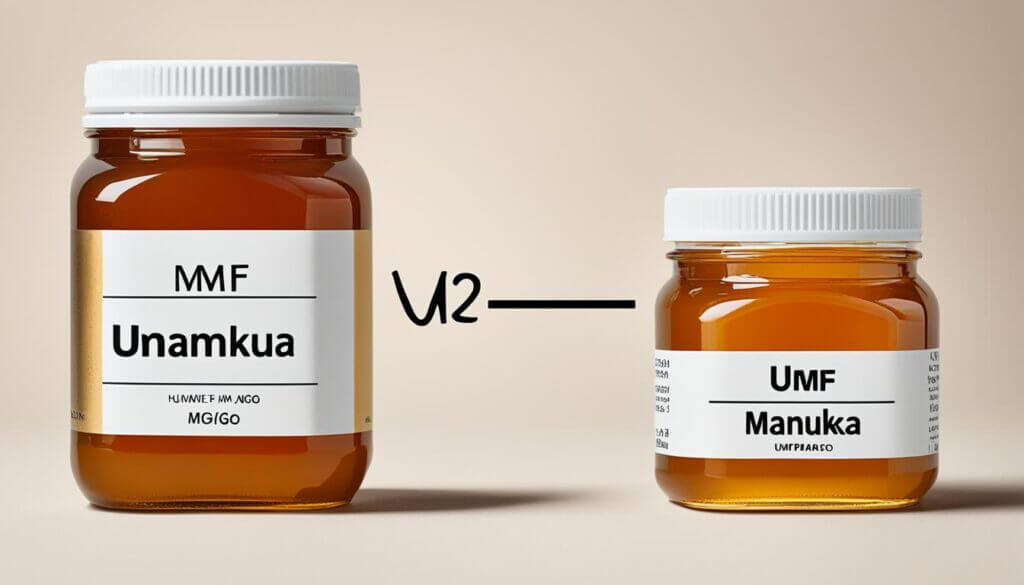
Breaking Down the Manuka Honey Grading System
When exploring the health benefits of Manuka honey, understanding the Manuka honey grading scale is essential. Consumers often encounter a plethora of terms and figures on Manuka honey labels that may seem perplexing. These labels provide crucial information about the NPA level, bioactive compounds, and overall quality of the honey. Grading systems such as the Unique Manuka Factor (UMF) and the NPA level are used by producers to indicate the therapeutic quality and concentration of specific bioactive compounds in Manuka honey.
| UMF Rating | NPA Level Equivalent | Typical Bioactive Compounds |
|---|---|---|
| UMF 5+ | Similar to NPA 5 | Dihydroxyacetone (DHA), Methylglyoxal (MGO) |
| UMF 10+ | Similar to NPA 10 | Hydrogen Peroxide, Leptosperin |
| UMF 15+ | Similar to NPA 15 | Higher levels of MGO and Leptosperin |
| UMF 20+ | Similar to NPA 20 | Maximum concentration of all bioactive compounds |
Deciphering these ratings can aid consumers in making informed choices. For example, UMF 5+ indicates a lower concentration of bioactive compounds, whereas UMF 20+ represents one of the highest grades, with a superior level of bioactive properties. A higher UMF or NPA number typically correlates with increased antimicrobial efficacy, making the honey more suitable for therapeutic use.
It is important for consumers to recognize that higher grades also mean the presence of certain bioactive compounds, such as Methylglyoxal (MGO), which provides Manuka honey with its unique antibacterial properties. The interaction between MGO and other elements like DHA and Leptosperin is crucial for the honey’s effectiveness, indicating that the grading scale is as much about the synergistic relationship between these components as it is about individual measurements.
While the manuka honey grading scale provides a good baseline for comparing products, consumers should also seek out additional quality assurances, such as certification by the Unique Manuka Factor Honey Association (UMFHA), which may accompany the UMF rating on premium brands. This kind of certification helps to ensure that the Manuka honey you purchase is genuine and of high quality.
- Always check for UMF or NPA rating on the label.
- Higher ratings signify a greater concentration of bioactive compounds.
- Ensure certification from recognized authorities for quality assurance.
In conclusion, by understanding the grading scale and what it represents, individuals can make more informed decisions about which Manuka honey products will best suit their health and wellness needs.
Certification Standards for Manuka Honey
Within the honey industry, Manuka honey authenticity relies on a framework of certifications that monitor and verify the purity and quality of this valuable natural product. Recognized standardized marks such as the Unique Manuka Factor Honey Association (UMFHA) label and the KFactor are essential for consumers seeking assurance of regulated honey products. These symbols of verification mean that a product has passed various tests that demonstrate its components and benefits, providing confidence and trust in Manuka honey’s healing potential.
The certification process includes a range of assessments, from scientific laboratory testing of the honey’s composition to tracing and auditing every step of its journey from hive to shelf. It’s a meticulous system designed to protect both the consumer and the integrity of the Manuka honey industry in New Zealand.
Notable certifications include:
- UMFHA Certification: Quantifies the presence of three signature compounds (Leptosperin, DHA, and Methylglyoxal), ensuring purity and quality.
- KFactor: A holistic approach that assesses raw honey’s purity, live enzymes, DHA, pollen count, pH level stability, antioxidant levels, and phenolic compounds.
To illustrate how Manuka honey is evaluated, consider the following table that depicts the criteria for receiving a UMF certification:
| UMF Rating | MGO (Methylglyoxal) Level | Non-Peroxide Activity (NPA) | Leptosperin Content |
|---|---|---|---|
| UMF 5+ | 83 mg/kg | Similar to NPA 5+ | Min. 100 mg/kg |
| UMF 10+ | 263 mg/kg | Similar to NPA 10+ | Min. 200 mg/kg |
| UMF 15+ | 514 mg/kg | Similar to NPA 15+ | Min. 300 mg/kg |
| UMF 20+ | 829 mg/kg | Similar to NPA 20+ | Min. 400 mg/kg |
These certification standards play a pivotal role in not only preserving the unique properties of Manuka honey but also in safeguarding the industry from counterfeit products. As consumers, understanding these certifications can aid in making an informed decision and ensuring that you’re receiving the genuine health benefits of true Manuka honey.
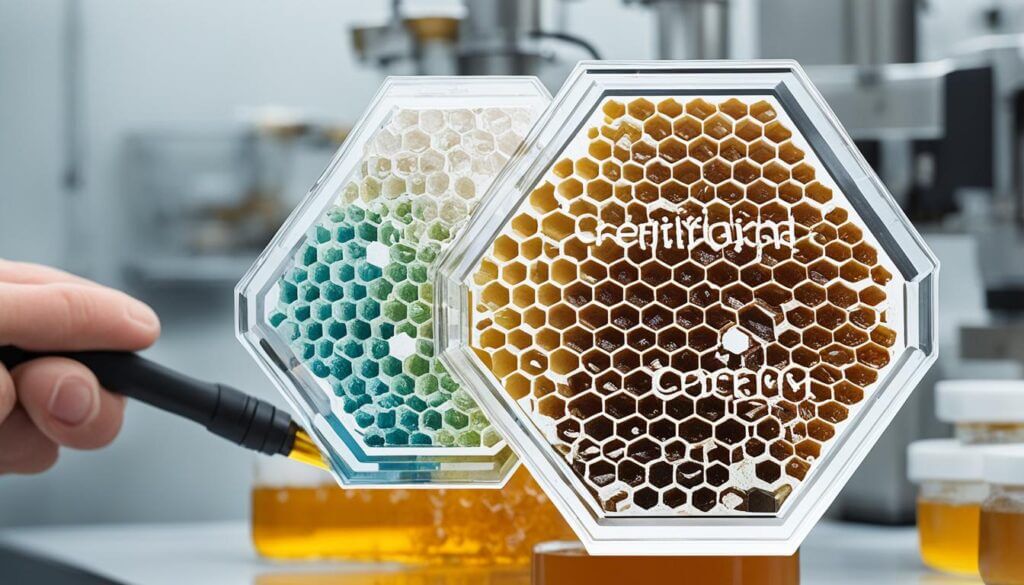
When purchasing Manuka honey, look for the UMF or KFactor rating on the label, which denotes that the honey inside has been thoroughly tested and verified for its unique qualities. Remember, investing in certified Manuka honey ensures you’re getting a product that is both authentic and potent, capable of delivering its acclaimed health benefits.
Manuka Honey Grades and Their Uses
The therapeutic uses of Manuka honey extend far beyond its sumptuous taste. With a multitude of grades available, each serves specific health-related functions, making it imperative to choose wisely based on one’s needs. The grade effectiveness of Manuka honey is not just a numeric value; it represents its potency and suitability for diverse applications ranging from skin care rituals to its role as a dietary supplement.
Skin Care: Manuka honey with a Unique Manuka Factor (UMF) of 10-15+ is widely celebrated for its ability to nurture the skin. Its hydrating and antibacterial properties make it ideal for face masks, cleansers, and as a natural remedy for acne or eczema relief.
Dietary Supplement: As a nutrient-rich food, Manuka honey of grades UMF 10+ and above can be incorporated into daily diet plans to enhance overall wellness. It works as a natural energy booster and supports immune health.
| Manuka Honey Grade | Recommended Use |
|---|---|
| UMF 5-9+ | General wellness, culinary purposes |
| UMF 10-15+ | Skin care treatments, minor wound dressing, sore throat relief |
| UMF 16-20+ | Dietary supplement, digestive health, immune support |
| UMF 20+ | Targeted therapeutic use recommended by healthcare professionals |
When considering Manuka honey for its therapeutic attributes, it’s crucial to reference credible sources and certified products. By understanding the relationship between Manuka honey grades and their specific uses, individuals can make informed decisions to optimally integrate this natural wonder into their daily health regime.
Decoding the Labels: How to Identify Genuine Manuka Honey
Understanding the labels on Manuka honey jars is crucial for protecting yourself against fake honey and ensuring you’re investing in a product that’s worth the premium. A genuine Manuka honey label guide includes several vital components that authenticate the product. To help buyers recognize authentic products and distinguish them from counterfeits, we have outlined the key label elements to look for:
- UMF/MGO Ratings: Look for the Unique Manuka Factor (UMF) or the Methylglyoxal (MGO) rating, which indicates the antibacterial strength of the honey. Authentic Manuka honey will have a UMF number ranging from 5+ to 20+, or an MGO rating typically starting at 83 mg/kg and going up to over 800 mg/kg for higher potency honey.
- Batch Numbers: A batch number signifies that the honey can be traced back to its source, ensuring accountability and quality control.
- License Numbers: Genuine Manuka honey producers must be licensed to use grading terms like UMF. The presence of a license number on the label indicates compliance with industry regulations.
- Trusted Manuka Brands: Opt for brands with a solid reputation, like Comvita, Manuka Health, or UMFHA members, which are more likely to offer high-quality, genuine Manuka honey.
Alongside these markers, there are red flags to beware of when purchasing Manuka honey:
- Vague labeling without specific UMF or MGO ratings.
- Missing batch or license numbers that prevent traceability.
- Excessively low prices that may indicate diluted or adulterated honey.
Below is a comparison of labels from trusted Manuka honey brands, highlighting key elements that signify authenticity:
| Brand | UMF Rating | MGO Content | Batch Number | License Number |
|---|---|---|---|---|
| Comvita | 15+ | 514 mg/kg | 0112034 | #1019 |
| Manuka Health | 20+ | 829 mg/kg | 4010056 | #2200 |
| Wedderspoon | Non-UMF Rated (KFactor 16) | N/A | 1125678 | #3053 |
Remember, purchasing Manuka honey from trusted Manuka brands not only ensures you get a quality product but also supports ethical beekeeping and sustainable practices. Always take the time to read the label closely, comparing it if necessary to the Manuka honey label guide provided above, to ensure you’re getting the genuine article, rich in natural benefits.
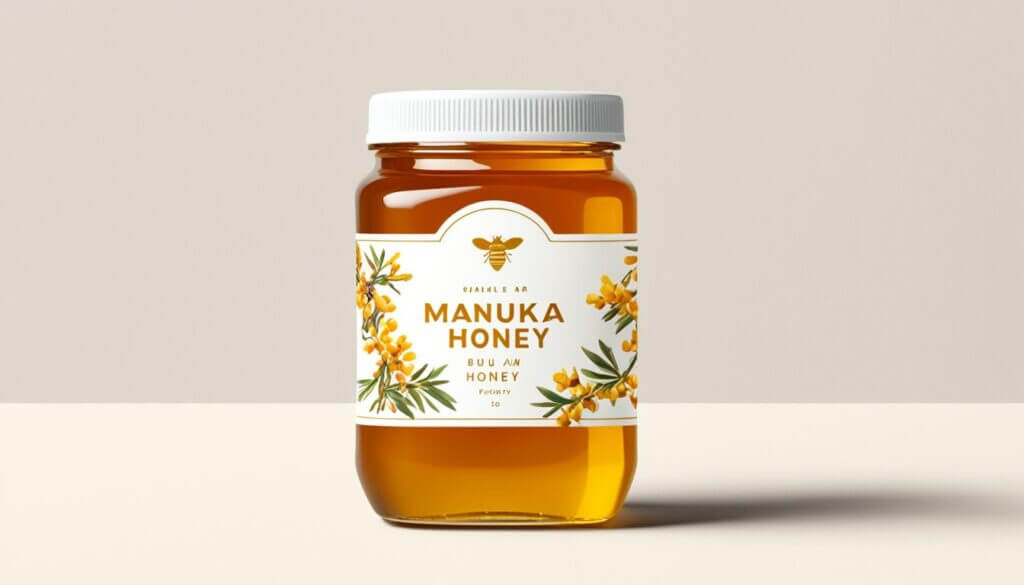
Comparing Mono-Floral vs. Multi-Floral Manuka Honey
When it comes to the premium honey market, Mono-floral Manuka honey and multi-floral honey are often discussed for their distinctive characteristics and health benefits. Understanding the variation in honey qualities between the two can guide consumers in making informed choices that best suit their preferences and wellness needs.
Mono-floral Manuka honey is derived predominantly from the nectar of the Manuka bush, Leptospermum scoparium, native to New Zealand. This type of honey is considered to be more potent in terms of its antibacterial properties due to the higher concentration of Manuka nectar. Multi-floral Manuka honey, however, is produced when bees have collected nectar from various floral sources, including but not limited to the Manuka bush. This results in a variety blend that still contains beneficial properties, but with a generally lower Manuka nectar concentration.
- Flavor Profile: Due to its purity, Mono-floral Manuka honey usually has a richer, more distinctive taste, while multi-floral variants offer a more complex bouquet of flavors, influenced by the different flowers visited by bees.
- Potency and Grading: The Unique Manuka Factor (UMF) rating system often rates Mono-floral Manuka honey with higher numbers, indicative of its stronger antimicrobial efficacy. Multi-floral types may have lower UMF ratings, hinting at a more varied but less concentrated array of compounds.
- Price Point: Generally speaking, Mono-floral Manuka honey tends to be more expensive due to its higher antibacterial activity and limited production, while multi-floral Manuka honey is more accessible but varies more in quality.
These differences between Mono-floral and Multi-floral Manuka honey play a significant role not only in their therapeutic uses but also in how they are graded and priced. To really appreciate these nuances, let’s look at the following comparative table:
| Attribute | Mono-Floral Manuka Honey | Multi-Floral Manuka Honey |
|---|---|---|
| Source of Nectar | Predominantly Manuka bush | Various flowers, including Manuka |
| UMF Rating | Typically higher (UMF 10+ to UMF 20+) | Varies (UMF 5+ to UMF 15+) |
| Antibacterial Strength | Higher antibacterial properties | Mild to moderate antibacterial properties |
| Flavor | More intense, herbaceous | Smooth, varied based on the floral mix |
| Price | More expensive | More affordable |
Whether you’re drawn to the robust intensity of Mono-floral Manuka honey or the intricate flavors of multi-floral varieties, appreciating the distinct variations in Manuka honey qualities can help in tailoring your preference to your health and dietary desires.
The Price Factor: Does Higher Grade Mean Better Honey?
When delving into the world of Manuka honey value, it’s important for aficionados and newcomers alike to evaluate the tangibles and intangibles that go into pricing this liquid gold. Undoubtedly, the market associates higher-grade Manuka honey with premium quality, but is it always the most cost-effective choice for consumers? Investing in high-grade honey must be weighed against both your personal wellness goals and your wallet’s willingness.
Higher UMF ratings do speak volumes about the potency and purity of Manuka honey, yet they also lead to a spike in price. The pivotal question is: does this amplified price point guarantee a corresponding increase in health benefits? Or do middle-grade options provide a sweet spot for everyday use, delivering on quality without breaking the bank? Understanding the nuances of Manuka honey’s grading system can guide consumers toward making well-informed decisions that align with both their health objectives and budget constraints.
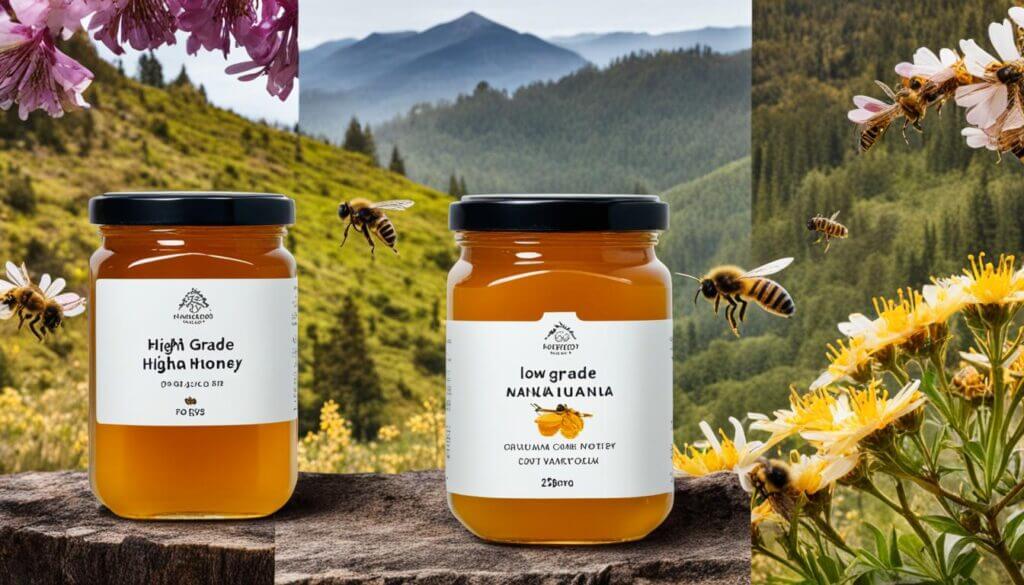
When forming an investment strategy for investing in high-grade honey, consider the following applications of varying Manuka honey grades:
- Topical Applications: For skin treatment, a UMF 10+ or above is often recommended. But for general skincare, lower grades may still provide beneficial antibacterial effects. The value may not proportionally reflect in the higher grades for this particular usage.
- Dietary Use: Ingesting Manuka honey for digestive benefits does not necessarily require the highest UMF available. Mid-tier grades often suffice, striking a balance between quality and value.
- Intensive Care: If the intent is to harness Manuka honey’s more potent antibacterial and healing properties for specific health conditions, investing in higher-grade varieties becomes more crucial, thus potentially justifying a higher cost.
Whether you’re indulging in a daily spoonful for overall well-being or seeking out an alternative remedy for acute ailments, understanding the relationship between grade, efficacy, and cost is paramount. Though the allure of ‘the best’ can be strong, the true worth of Manuka honey lies in its alignment with individual needs and expectations, not merely its grade or price tag.
In the end, the savviest consumers weigh the compelling factors of Manuka honey value, its cost-effectiveness, and the rationale behind investing in high-grade honey. Doing so ensures that the Manuka honey chosen is not just a matter of luxury, but a conscientious investment in health and wellness, tailored to their unique requirements.
Manuka Honey Grades
When it comes to harnessing the unique benefits of Manuka honey for your health, selecting the right grade is paramount. The optimal Manuka grade selection depends on the specific wellness goals you aim to achieve. Below, find a curated table that simplifies this choice, spotlighting the best Manuka honey for health enhancement and popular uses associated with each grade tier.
| Grade | UMF/MGO Rating | Suggested Use |
|---|---|---|
| Entry-Level | UMF 5+ / MGO 83+ | Daily health maintenance, culinary applications |
| Intermediate | UMF 10+ / MGO 263+ | General wellness, digestive support |
| Advanced | UMF 15+ / MGO 514+ | Immune system boost, topical application for skin health |
| Therapeutic | UMF 20+ / MGO 829+ | Intensive care, targeted health applications |
While lower grade Manuka honey provides a delightful taste and daily wellness benefits, higher UMF or MGO ratings suggest a more potent antibacterial action suitable for therapeutic needs. As you move up the grading scale, you reach the pinnacle of what many consider the best Manuka honey for health, distinguished by its strong antibacterial and healing properties. Therefore, the optimal Manuka grade selection requires balancing personal health goals with the grade’s intended use to make a wise and beneficial choice.
Conclusion
Throughout this comprehensive exploration, we’ve delved deep into the essence of Manuka honey, relaying not just its sweet delight but the significance it bears on a natural wellness journey. We recognize that amidst the wealth of options, an informed honey purchase is paramount. Understanding the nuances behind Manuka honey grade choice can be the differentiator in maximizing the potential health benefits it heralds. It’s not merely about the sweetness or the texture, but rather how the unique properties aligned with specific grades serve individual wellness objectives.
The journey through this elixir’s grades—from the mild UMF 5+ to the powerful UMF 20+—paves the way for a more nuanced and personalized approach to natural health solutions. Whether used as an antibacterial wonder, a natural skincare ingredient, or a dietary enhancement, knowing the grade of Manuka honey and how it fits within your health regimen is key. This knowledge acts as your compass in the varied landscape of genuine Manuka honey products, ensuring that investments into your health are both wise and effectual.
As we draw this discussion to a close, let’s consider the wealth of information shared as a resource for a more enlightened foray into the world of Manuka honey. Reflect on how each grade heralds its bioactive strength, offering a spectrum of health-promoting potentials. Hold the insights close as you stand before shelves of amber jars or peruse online offerings. Make your next Manuka honey selection a testament to your commitment to a flourishing, naturally inspired lifestyle.
